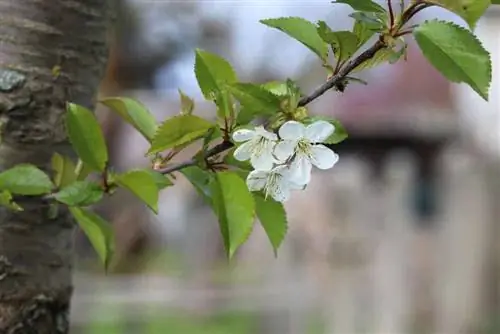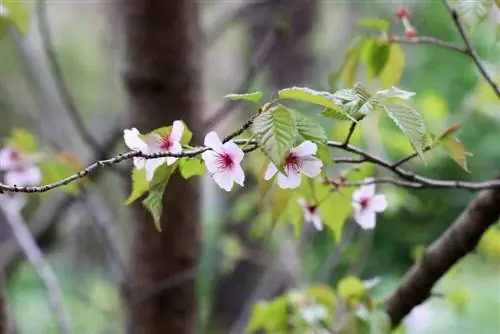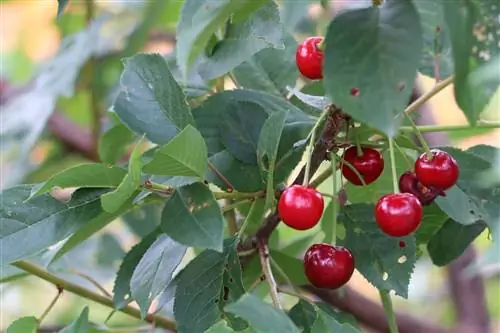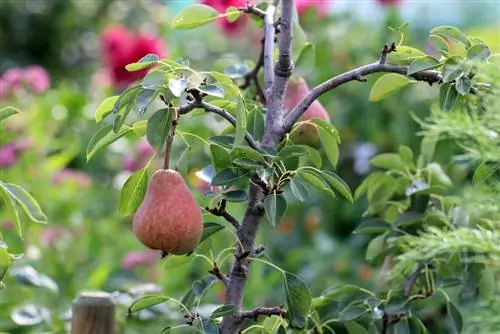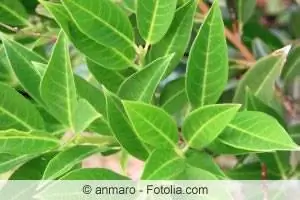- Author admin [email protected].
- Public 2023-12-17 03:39.
- Last modified 2025-01-24 12:45.
The Prunus fruticosa Globosa in German ball cherry is also called steppe cherry or dwarf cherry. The ball cherry is characterized by its low demands on the soil and environment, its robustness and its easy care. At the same time, it delights with a beautiful, white flower and, as the name suggests, a spherical crown.
Due to its low demands, the dwarf cherry is suitable for hobby gardeners or homeowners, property owners who have no particular affinity for gardening but still value the beautiful appearance of their property.
Location
The globe cherry is not particularly picky about its location. However, the name steppe cherry shows that it prefers warm and sunny places. But it can also set up in shady places. If you want to use the tree as a container plant, a warm and sunny place is recommended, such as on a roof terrace or another suitable location. The globe cherry copes very well with urban climates, which is why it is also suitable as a street or avenue tree.
The tree is often used to enhance, structure or flank the entrance area of residential buildings or driveways. The geometric spherical shape of the crown is particularly suitable for creating symmetries when designing surfaces.
Soil and substrate
The globe cherry is also quite undemanding when it comes to the substrate, but it does not tolerate heavy soils. The plant can be happy with lime-rich and otherwise nutrient-rich soils that are clayey and slightly alkaline.
Planting time, watering and fertilizing
In principle, the globe cherry can be planted all year round. In this aspect too, the dwarf cherry proves to be an easy-care and undemanding friend of the gardener. Due to the hard ground in autumn or winter, planting a tree in these seasons is not necessarily doing yourself a favor, even if it is generally possible. Planting in spring or summer is generally recommended. It is important that the globe cherry is watered sufficiently after planting. After about a year, the tree is well rooted and supplies itself with water. As with many other plants, you should give the globe cherry some water during extended dry periods and use a watering can or garden hose. In most cases, the tree does not need fertilizer. If you still want to fertilize, you can use compost.
Growing, care and cutting
The globe cherry is often offered and sold with a refined growth of 2.20 meters, so that only the crown grows afterwards. Overall, the tree reaches a height of 3, 50 to 4 or 5 meters. In principle, annual growth of 10 to 25 cm can be expected. The tree has a crown diameter of 1.5 to 2 meters in width. The dwarf cherry generally does not need to be cut. If you still want to prune, you can still do it because the tree tolerates pruning very well. It is advisable to cut the globe cherry during dormancy in winter and before budding in spring. However, you must take into account and accept that it will not bloom in the following flowering period.
Tip:
To preserve the flowers, cut the steppe cherry immediately after flowering. Be careful not to cut too hard. A short cut is enough. The tree is extremely winter-hardy and usually gets through the cold season very well.
Flowers, leaves and fruits
The flowers of the globe cherry are white and appear in the months of April and May. The flowers are odorless but very attractive. You can be pretty sure that the white flowers are an eye-catcher and will visually enhance or decorate your house or property. The leaves are green and are shed during the fall. Before that they turn yellowish or orange or even red. The fruits consist of dark red tart cherries that are not poisonous to humans but are inedible. It should be said that the fruits are not always formed or every year. However, if they are formed, you have to accept that they attract birds and insects. If this is annoying for you, you should avoid the globe cherry.
Pests and diseases
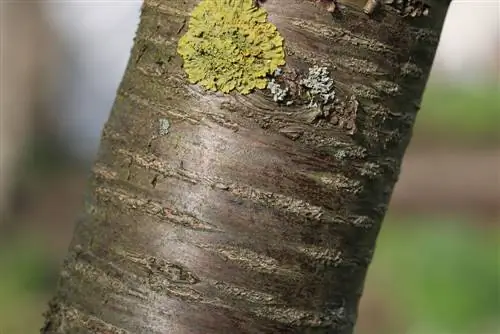
The globe cherry is an extremely he althy and not very susceptible tree. It is therefore a relatively undemanding plant when it comes to plant protection measures and saves the gardener heartache and worries. The most common, but still comparatively rare, fungal infection can occur, which prevents the supply of water, especially to the crown. The fungus usually enters through the grafting site, but it can also occur through external injuries to the tree. Once the fungus has spread, the tree appears sickly and stunted and the growth of the crown is reduced or comes to a complete standstill. In most cases all that remains is to replace the tree.
Frequently asked questions
Does the globe cherry tolerate the company of other trees?
This is more likely to be negative, as the tree tends to grow solitary. A distance of at least five meters from other trees should be taken into account. However, underplanting flowers is usually not a problem.
Does anything special need to be taken into account when planting or caring for it?
No, the globe cherry is basically an absolutely undemanding and resilient tree. The only things that should be avoided are planting the globe cherry too close to other trees, avoiding heavy soil and watering it sufficiently in the year after planting. So you already know everything you need to know about the globe cherry.
Do you have to have special experience or specialist knowledge when dealing with the globe cherry?
Here too, the answer is a clear no! The globe cherry is a tree that is suitable for both experienced gardeners and beginners or for people who are not particularly fond of gardening and therefore do not want to put in any special effort in caring for their garden. If you want, you can indulge the globe cherry to your heart's content, but it's not necessary. She gets along very well on her own in every season and under many conditions and hardly needs any attention or care.
What you should know about the ball cherry in brief
Location
- The globe cherry likes a sunny location, but can also cope with light shade.
- Since the tree can also be cultivated as a container plant, you can also place it on roof terraces and other very sunny places.
Planting substrate
- The globe cherry places no demands on the planting substrate. Any average garden soil is suitable.
- It is good if it is somewhat loamy and rich in nutrients. The tree likes a neutral to alkaline soil without compaction.
- Heavy soils are not so suitable.
Watering and fertilizing
- Watering after planting and in the first year is particularly important. Then the tree should be well rooted and can take care of itself quite well.
- In the event of prolonged drought, especially in spring, the globe cherry is happy to be watered.
- Fertilization requires little to no fertilization. Compost is the method of choice.
Cut
- The tree does not need pruning, but tolerates it well. If necessary, cut back the globular cherry to rejuvenate the crown.
- The tree usually copes well in the first few years without pruning. Only older specimens are cut a little.
- If you need to prune, February and March are the best months for it. You use a day without frost and without sun.
- However, if you want the tree to bloom, you only cut it after it has bloomed.
Diseases and pests
The globe cherry is a very he althy tree that hardly needs any plant protection measures. The tree is quite undemanding.

